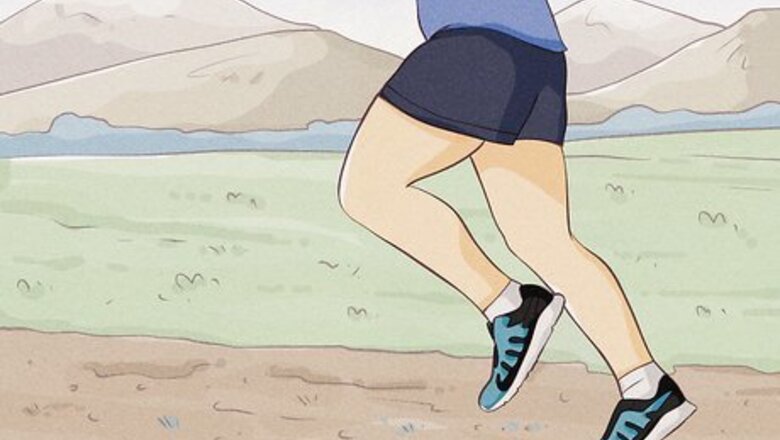
views
X
Trustworthy Source
Johns Hopkins Medicine
Official resource database of the world-leading Johns Hopkins Hospital
Go to source
Before you choose your shoes, you'll need to take into account the terrain you run on, your running style, and your personal tastes. Then you'll be ready to purchase and take your first steps in your new running shoes, and when you do, you won't regret the time you spent.
Determining Your Needs

Consider the surface you will be running on. This will significantly influence what kind of shoe will be best for your foot. For instance, if you are running on a track or court specially designed to be flat and offer grip, you won't need extra traction on your shoe. Generally: Road/track running will require less traction and lighter weight. Trail running should have good traction, support, and cushion for uneven ground. EXPERT TIP Tyler Courville Tyler Courville Professional Runner Tyler Courville is a brand ambassador for Salomon Running. He has run in 10 ultra and mountain races across the United States and Nepal, and won the 2018 Crystal Mountain Marathon. Tyler Courville Tyler Courville Professional Runner Tip from Tyler Courville, Ultra and Mountain Runner: "Gear that’s good on roads isn’t necessarily good in the mountains, so be specific about what shoe you need for the terrain." A Personal Cautionary Tale: "I remember I bought this pair of trail shoes once. I ran with them on roads and thought they were phenomenal. Then, I wore them for a technical mountain run in Montana, and in the middle of the race, I discovered that they weren't suited for technical terrain — my foot was sliding all over. I ended up having to tie them so tight to keep them in place that I gave myself tendinitis on the top of my foot. It's a good lesson to know the terrain you're running if you’re doing anything in the mountains, and test your gear ahead of a big race."
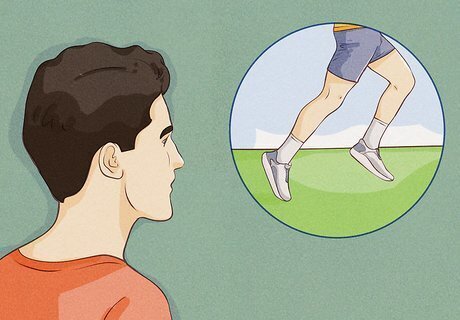
Identify the kind of running you will do. It's important that you don't accidentally buy athletic shoes that aren't designed expressly for running. There are many different categories of athletic shoes, like training shoes or walking shoes, though these are no ideal for indoor, track, cross country, sprint, or distance running.
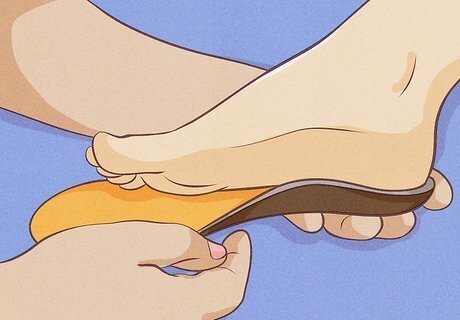
Receive a professional evaluation for your feet. Many specialty running stores now have equipment that can analyze your gait (how you walk/run) and your foot type. This will help you to know whether or not you need support to prevent your foot from rolling inward (also called pronating). Though there are many different foot-types, the main three are: Neutral footed runners, where your foot comes into contact with the ground toward the middle of the foot. Overpronation, where your foot rolls inward too far. Underpronation, where your foot does not roll in far enough (optimal is about 15% give). This results in inefficient impact dispersion, and it causes the lateral (outside) part of your feet to do more more work than necessary at the push off.
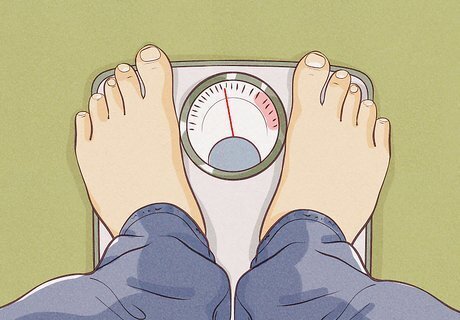
Take your weight into account. The heavier you are, the greater the impact between your foot and the ground will be. This increase in impact may require you to purchase shoes with additional support, even if your foot-type is neutral and you normally would not be advised in that way. You may want to bring this attention to your doctor or the expert helping you decide on your shoes, especially if you already feel foot, leg, or back pain.

Consult a doctor about injuries and physical impairments. You may have an injury that influences your gait, or a physical impairment that does the same. In both these instances, you should check with your doctor as to what kind of shoes would offer the best support and running experience with you.
Purchasing Your Running Shoes

Go to a specialty running shoe store for your fit. Different designs in shoes can drastically change the fit and feel of it. Sometimes the materials used in making a shoe can make it feel uncomfortable, stiff, or heavy. Prevent this from happening by trying on many different pairs at a physical store. Although buying shoes online can be affordable, there is no real substitute for trying on shoes in person. The wrong choice in shoe can cause pain, injury, or discomfort.

Try on your shoe later in the afternoon. This may sound silly, but over the course of the day, your feet become swollen from physical activity. By trying on your shoe later in the day, you will prevent buying a shoe that is too small. You might also consider: Trying on shoes after a run. This will simulate the max size of your foot. If you have orthotics or generic supports, bring these with you. These should be taken into consideration during your fitting.
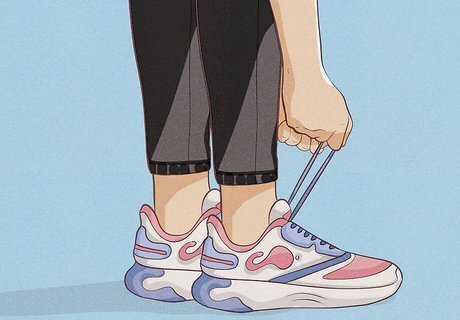
Aim for shoes that are snug. If you feel pinching or uncomfortable rubbing, that shoe is likely not your best fit. Over the course of your run, your feet will swell in size. Also, over the course of your running, the uncomfortable features will likely become worse with each mile, causing you unnecessary discomfort. Tie the shoes and walk around after slipping them on your feet. Maybe even take a few laps around the store, if permitted. This way, you'll have a better feel for fit of the shoe.
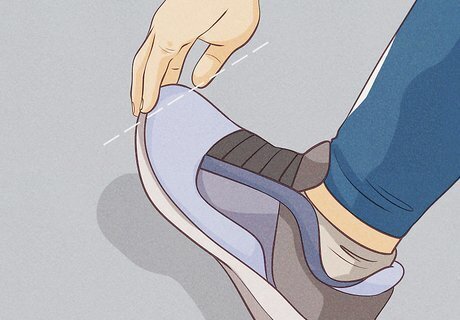
Consider a half-size larger. The strain put on feet and the resulting swelling means that most runners have to buy a shoe that is a half size larger than their normal street shoe. A good rule of thumb is to test your shoe by: Slide your foot forward in your shoe. Insert a finger in between your foot and the heel of the shoe. Verify there is a finger's width of space to prevent your shoes from being cramped when towards the end of a run.

Ask questions about the features of your shoe. A good pair of running shoes can be expensive, so you might want to avoid paying extra for unnecessary features. Ask the shoe clerk helping you about features like: Vents in the shoe. The shape or configuration of the bottom of the shoe. Transparent parts that show an "air bladder" for support.
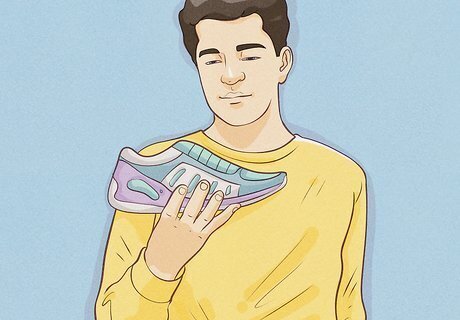
Keep an open mind. Even if there is a shoe that looks perfect for you, that's just in your color, do not let appearances deceive you into buying an uncomfortable shoe. You will be spending a lot of time and earning a lot of sweat in your new shoes. Try on many, and note the pairs that feel best.
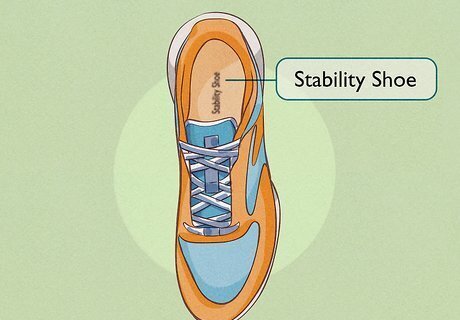
Inquire about specializations within your shoe type. Even if you are buying a specialty shoe, like a stability shoe or a motion control shoe, inside each of these categories are even more specializations. For example, a stability forefoot striking shoe will not serve a heel striker well. Those who are prone to injury might consider maximalist running shoes, which are intended to even further reduce the force of impact.

Break in your shoes to prevent blisters and increase comfort. While your shoes adjust to your feet and your feet adjust to your new shoes, there will probably be some very slight friction which could cause blisters. Begin breaking in your new shoes by going on shorter runs or walking. This way you run less of a risk of developing blisters. Some recent studies have suggested that, especially for athletic and running shoes, you should be able to put your new footwear on immediately and be comfortable.
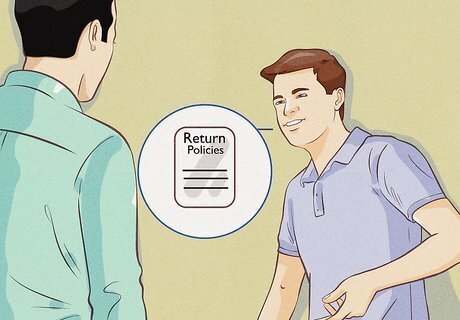
Ask about and make use of return policies. Many shoe stores allow shoes to be returned up to a month after you have bought them. If, after a few test runs, you decide that your new shoes really don't suit your feet, return them and find something more suitable.



















Comments
0 comment